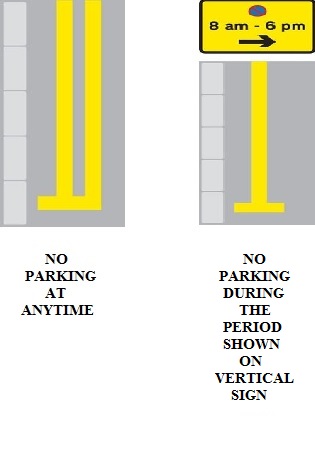Understanding road signs is one of the most important components when we are driving or riding on public roads. Without a reasonable knowlegde of these it will be very difficult to stay safe and to garanty for other road users safety, especially when we ride or drive in urban busy areas.
Road signs are the bible for anyone who drives, rides or is about to become a road user, so I decided to do this post where I will try to explain a few signs particularly for those who are less experienced or unfamiliar with the U.K. Road Signs.
How To Understand Road Signs
RED BORDER CIRCLES– Normally prohibition signs or negative orders.
RED BORDER TRIANGLES– Normally warning signs.
BLUE CIRCLES– Indicate a positive order or obligation.
BLUE or WHITE RECTANGLES– Informative signs.
BLUE or GREEN backgrounds and BLACK BORDER RECTANGLES, or BROWN BACKGROUND RECTANGULAR- Direction signs, primary routes, secondary routes and other directions such as points of interest.
PROHIBITION or NEGATIVE ORDER SIGNS:
WARNING SIGNS:
Important note: The give way sign and Stop sign, both mean that we have no priority at a junction, We must stop to give way to any traffic from the left or right. The difference in between them is that on the give way sign you must look both sides, and in case it is safe to make a turn there is no need to stop at the junction. On the STOP sign, you must stop at the junction independently of any vehicle approaching or not.
POSITIVE ORDER or OBLIGATION SIGNS:
A FEW EXAMPLES OF INFORMATION SIGNS:
NOTE: The “Right of way over oncoming vehicles” is always opposite to the “Give way to oncoming vehicles” as shown on the example above.
DIRECTION SIGNS:
THE NATIONAL SPEED LIMIT AND ITS SIGN:
This road sign and meaning apparently seems to generate confusion to most people so I hope this explanation can clarify my little audience about “the national speed limit”. ( Please note that the value changes according to the type of vehicle we are using, and this post is more motorbike orientated.)
THE SIGN:




ROAD MARKINGS:
Road markings are part of the highway code (our bible). They strongly contribute in guidance, orientation and safety for any vehicle, motorist or pedestrian on the road. They shouldn´t be ignored at any time as their role is fulcral in order to keep the traffic flowing orderly. Also many road marks work in parallel with vertical signs and often replacing a traffic sign in its absence, so it is imperative we understand them.
Road Markings across the carriageway:

- Junction marking. Give way to any traffic on a major road. (Can also be at mini-roundabouts.)

- Junction marking. Stopping line at a STOP SIGN.

- Give way to traffic on the right at a roundabout.
Along the carriageway:
 This dashed central line separates a two way road or divides lanes on a road with two or more lanes. The dashed line along the road also indicates that overtaking is allowed on a two way road and changing lane in a road with two or more lanes is also allowed.
This dashed central line separates a two way road or divides lanes on a road with two or more lanes. The dashed line along the road also indicates that overtaking is allowed on a two way road and changing lane in a road with two or more lanes is also allowed.
 A central double white line separates a two way road or dual carriage way. Overtaking is allowed to the traffic on the dashed line side and a continuous white line forbids it to all traffic traveling on opposite direction.
A central double white line separates a two way road or dual carriage way. Overtaking is allowed to the traffic on the dashed line side and a continuous white line forbids it to all traffic traveling on opposite direction.
 Similar to the previous road marking. It can be on a two way road or a dual carriage way. In this case the continuous white central lines indicate that overtaking is on allowed to any traffic on both directions.
Similar to the previous road marking. It can be on a two way road or a dual carriage way. In this case the continuous white central lines indicate that overtaking is on allowed to any traffic on both directions.
Along the carriageway Stopping and Parking road marking restrictions:

- NOTE: Be aware that stopping time may vary from council to council or city to city and traffic wardens may operate in the area issuing penalties to enforce the rule.

Other road markings:









































This is good
LikeLike
This is a very good
LikeLike